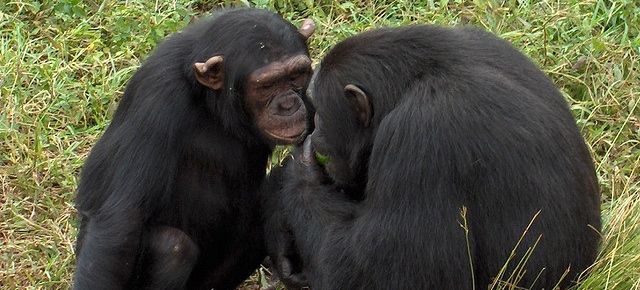
Kate Lunau is covering the 2012 annual meeting of the American Association for the Advancement of Science in Vancouver, a gathering of some of the world’s finest brains and celebrities of science. On Feb. 16-20, Lunau will bring you a sneak peak of the latest research and findings, posting to Macleans.ca on anything from healthcare and climate change, to food security, and more. Follow Kate on Twitter:@Katelunau , #AAAS, #AAASmtg.
In a video presented on Monday morning at the AAAS Meeting in Vancouver, a large Asian elephant named Pepsi inspects herself in a mirror. A white X has been painted over her right eye, and she pats at it curiously with her trunk over and over again, presumably trying to figure out what it is. In a separate scene, another X has been painted on her face—this one, over her left eye. She prods at that with her trunk, too. Then she steps back from the mirror and opens her mouth wide, peering inside. It’s a part of the body elephants don’t normally get to see, and she’s taking advantage of being able to see herself clearly.
This is a simple test designed to show that elephants can recognize themselves in a mirror, renowned biologist Frans de Waal explained to a packed lecture hall. For a long time, it was believed that animals lacked self-recognition and even empathy, but as de Waal showed, that’s far from the truth. Morality enhances their sense of cooperation, he explains: in another video, two elephants work together, pulling a giant apparatus by rope to earn a food treat at the end.
Monkeys and apes have shown all sorts of signs of cooperation. In one recent study that de Waal described, two chimpanzees were placed side-by-side in separate enclosures. One had a task to do, and the other had a set of seven different tools. The second chimpanzee would observe what the first needed, and passed him the right tool, indicating he understood what his partner wanted to do, and wanted to help him.
They’ve been shown to care about others, too. In another study, de Waal let seven female chimps choose between two differently coloured tokens: a red one, that resulted in a reward for her only, and a green one, which gave a food prize to both her and a partner. Each was tested with three different partners, and showed a real preference to help their partner out rather than to simply look out for themselves. Incredibly, gorillas have even been seen helping humans. De Waal cited the example of Binti Jua, a gorilla who saved a young boy who fell into his enclosure at the Brooklyn Zoo.
De Waal’s talk was a fitting end to this year’s AAAS Meeting, which underlined the interconnectedness of everything on the planet—whether human, animal, plant, or microbe. Discussing every scientific topic under the sun, everyone here seemed to be full of optimism about the real possibilities that exist to make the future a better, more sustainable place. As one Vancouver scientist said to me yesterday: “It’s not that I love science; I love nature, and I love the truth. Science is just the way we talk about everything around us.”